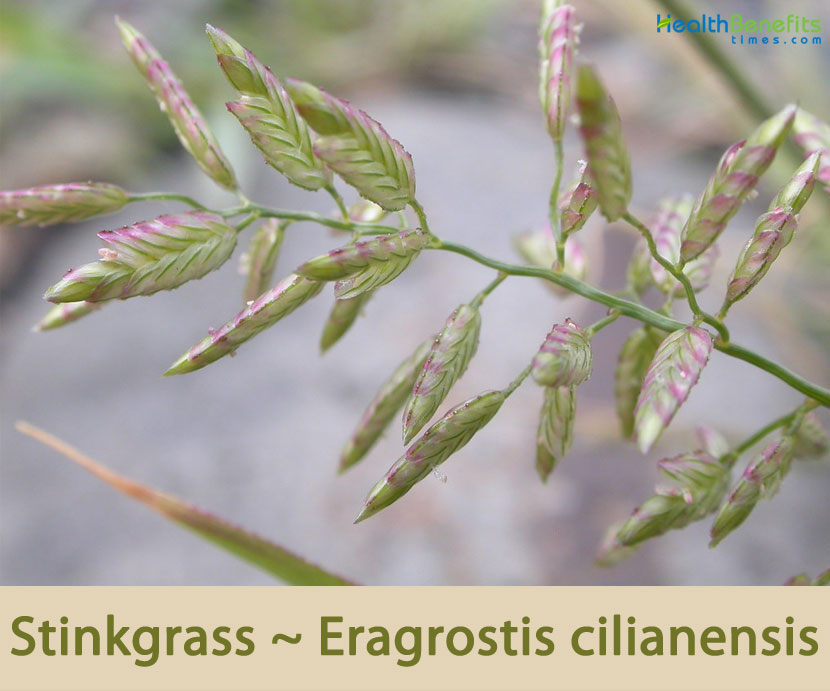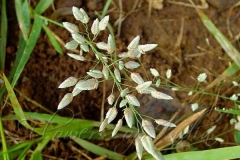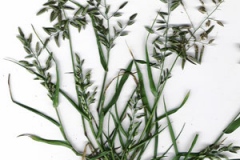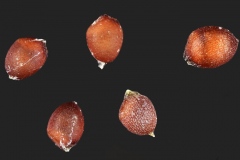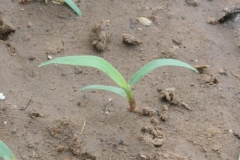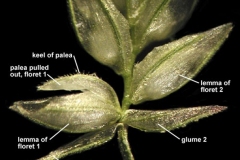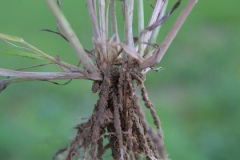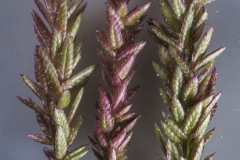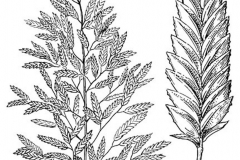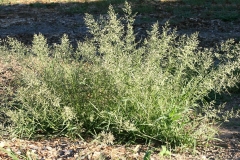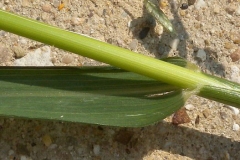| Stinkgrass Quick Facts | |
|---|---|
| Name: | Stinkgrass |
| Scientific Name: | Eragrostis cilianensis |
| Origin | Europe, Africa, the Arabian Peninsula, Western Asia, the Indian Sub-continent and eastern Asia |
| Colors | Rich translucent brown or reddish brown |
| Shapes | Indehiscent grain about 0.5 mm. long, ovoid-globoid in shape |
| Name | Stinkgrass |
|---|---|
| Scientific Name | Eragrostis cilianensis |
| Native | Europe (i.e. Austria, Hungary, Switzerland, Moldova, Ukraine, Albania, Italy, Romania, Yugoslavia, France, Portugal and Spain), Africa (i.e. Algeria, Egypt, Libya, Eritrea, Ethiopia, Somalia, Sudan, Kenya, Tanzania, Uganda, Zaire, Burkina Faso, Ivory Coast, Ghana, Mali, Niger, Nigeria, Senegal, Angola, Malawi, Mozambique, Zambia, Zimbabwe, Botswana, Lesotho, Namibia, South Africa and Swaziland), the Arabian Peninsula (i.e. Saudi Arabia), Western Asia, the Indian Sub-continent (i.e. India and Pakistan) and eastern Asia (i.e. China, Japan, Myanmar and Thailand) |
| Common Names | Black grass, candy grass, gray love grass, lovegrass, snake grass, spreading lovegrass, stink eragrostis, stink grass, stink lovegrass, stink-grass, stinking eragrostis, stinking lovegrass, strong scented lovegrass |
| Name in Other Languages | Afrikaans: Stink eragrostis Albanian: Eragrost, eragrosta kallimadhe Arabic: Tirab (تيراب) Bulgarian: Edroklasa vlasica (едрокласа власица), edroklasa polevichka (едрокласа полевичка) Catalan: Eragrostis major Croatian: Mnogocvjetna kosmatka Czech: Milička velkokvětá, milička větši Chinese: Da hua mei cao (大畫眉草), Xing xing cao Danish: Slørhvene, Stor kærlighedsgræs Dutch: Groot liefdegras, Stinkend liefdegras English: Gray love grass, Snake Grass, Stinkgrass (USA), Stink lovegrass, Greater love-grass, Strong-scented lovegrass, Candygrass, spreading lovegrass, Finnish: Tanakkaröllinurmikka French: Éragrostide amourette, Éragrostide de Ciliani, Éragrostis majeur, Grand éragrostis, Éragrostide fétide, Grande éragrostide, Éragrostide de Ciliani, Éragrostide à gros épillets, amourette, eragrostide vulgaire, éragrostide grande German: Großes Liebesgras, Grossaehriges Liebesgras, Grossähriges Liebesgras, Großähriges Liebesgras Hebrew: Ben-chilaf gedol-shibbolit, בֶּן=חִילָף גְּדוֹל-שִׁבּוֹלִית Hungarian: Nagy tőtippan Iraq: Dukhaineh Italian: Gramignone, Panicella maggiore, eragrostide di Ciliani, panicella Japanese: Suzume gaya (スズメガヤ), ô-suzumegaya (オオスズメガヤ) Latvian: Skropstainā eragroste Lithuanian: Didžioji posmilgė Malagasy: Ahipoly, Ahipody, Tsimbony Netherlands: Liefdegras, groot Polish: Miłka wielka Portuguese: Capim-mimoso, Capim-mimoso-fedido, graminha, milhã-brava Russian: Polevichka krupnokoloskovaya (полевичка крупноколосковая), polevichka chilianskaya (полевичка чилианская) Serbian: Obichna kosmatka (обична косматка) Slovak: Milota velkoklásková Slovene: Mnogocvetna kosmatka South Africa: Blou(soet)gras, matatane, moseeka, rysgras, soetgras, tuingras Spanish: Eragrostis mayor, bailarines, espiguilla, lindrilla, traicionero, zacate apestoso, zorilla, barbas de chivo, pasto hediendo, gramilla blanca, hierba hedionda, pasto de coche, pasto de la perdiz Swedish: Stort kärleksgräs Turkish: Meşe yulafı Ukrainian: Gusyatnik krupnokoloskoviy (гусятник крупноколосковий) Welsh: Serchwellt Drewllyd |
| Plant Growth Habit | An aromatic, vigorous, summer growing, tufted, upright or sprawling annual bunchgrass |
| Growing Climates | Roadsides, waste places, cultivated fields, pastures, footpaths, gardens, lawns, disturbed sites, vacant lots, orchards, nurseries, yards, wooded grassland; granite sand veld, cropland, railroads, construction sites and mined land. Sunny habitats with a history of disturbance are preferred |
| Soil | Adapted to a variety of soils |
| Plant Size | About half a meter in height |
| Root | Fibrous root system |
| Stem | Generally erect but may droop or bend. The stems have glandular tissue near the nodes and the long leavest, 5-15 cm long, 3-6 mm wide, are often dotted with glands as well. |
| Leaf | Leaf blades are 3-9 mm. across and 2-7 inches long. They are widest at their bases and either flat or rolled upward along their margins |
| Flowering season | June-October |
| Flower | Flowering heads branch, are often gray-green, and consist of flowers clustered in spikelets. The spikelets are narrowly lance shaped or oblong and lack needlelike awns. |
| Fruit Shape & Size | Indehiscent grain about 0.5 mm. long, ovoid-globoid in shape with a textured surface |
| Fruit Color | Rich translucent brown or reddish brown |
| Seed | Tiny, dark brown, egg shaped or lens-shaped, and less than 1mm in size |
| Propagation | By Seed |
| Traditional uses |
|
Plant Description
Stink grass is an aromatic, vigorous, summer growing, tufted, upright or sprawling annual bunchgrass that normally grows up to about half a meter in height. The plant is found growing in roadsides, waste places, cultivated fields, pastures, footpaths, gardens, lawns, disturbed sites, vacant lots, orchards, nurseries, yards, wooded grassland; granite sand veld, cropland, railroads, construction sites and mined land. Sunny habitats with a history of disturbance are preferred. The plant is adapted to a variety of soils. The root system consists of a tuft of fibrous roots. The stems are generally erect but may droop or bend. The stems have glandular tissue near the nodes and the long leavest, 5-15 cm long, 3-6 mm wide, are often dotted with glands as well. The plants have a strong scent.
Leaves
Alternate leaves occur along the entire length of each culm underneath the exserted inflorescence. The ascending to spreading leaf blades are 3-9 mm. across and 2-7 inches long. They are widest at their bases and either flat or rolled upward along their margins. At intervals along the margins of leaf blades, there are glandular droplets. These droplets are visible with a 10x hand lens. The upper leaf surface is medium to dark green and slightly scabrous (rough-textured), while the lower leaf surface is medium green, hairless, and smooth. The open leaf sheaths are medium green, hairless, and vertically veined. The ligules are hairy, especially along their outer margins.
Flower
The pedicels of spikelets are up to 10 mm. long and divergent. The peduncle of the inflorescence is up to 6 inches long, medium green and glabrous. The rachis of the inflorescence is also green and glabrous, except at the bases of the primary lateral branches, where it has small tufts of hairs. The branches and pedicels of the inflorescence are medium green, wiry, and slightly scabrous. The spikelets are 5-20 mm. long, 2-3 mm. across, and compressed. They are whitish green or grayish green while immature, becoming light tan at maturity. Each spikelet has a pair of glumes at the bottom and 2 ranks of 8-40 overlapping lemmas above. The glumes are 1.5-2 mm. long, membranous, lanceolate, and keeled. They are green-veined along their keels and sometimes along their two sides. The lemmas are 2-3 mm. long, membranous, lanceolate-ovate, and keeled. They are green-veined along their keels and conspicuously green-veined along their two sides. The anthers of the florets are up to 0.5 mm. long. The blooming period occurs from mid-summer to early autumn, lasting about 1-2 weeks for individual plants. The perfect florets of the lemmas are cross-pollinated by wind.
Fruit
Afterwards, the florets are replaced by silvery gray to yellowish, the mature grains (seeds) falling away individually along with the lemma, leaving the paleas and glumes behind persisting on the stalk. Individual grains are about 0.5 mm. long, ovoid-globoid in shape, and rich translucent brown or reddish brown with a textured surface.
Culinary Uses
- Seeds are eaten as a cereal.
- It can be made into cakes or eaten as gruel.
- The grass is edible, and is taken as a normal part of the diet by people in the Lake Chad area.
Few Facts
- In Hawaii it has been recorded as a weed of drier habitats, including beaches, grasslands and open shrub lands.
- Stink grass, so called in North America from its disagreeable odor when fresh, is occasionally used as fodder.
- The plant is harvested from the wild for local use as a food, medicine and source of materials.
- It is sometimes used in soil reclamation schemes.
- The culm yields straw that is used for thatching, though its quality is inferior.
- It is made into palliasses in Kordofan, and plaited into circular covers for pots holding milk or millet mash in the process of fermentation.
- People in Nigeria make the straw into matting.
Prevention
Prevention of Stink grass is less expensive and less time-consuming than trying to control it. Make sure when you are seeding a new area you are doing so with certified weed-free seeds. For your lawns, create a dense lawn filled with desirable species, sufficient fertilizing, regular mowing and proper irrigation. If there is an infested area on your property, be sure to drive around, instead of through it. Make sure to give all equipment that has been in infested fields a good clean, to make sure no seeds are transferred. There are a few pre-emergent controls that can be used on Stink grass depending on the crop fields they are infesting. All the pre-emergent herbicides listed below provide 80% or more control of Stink grass. For corn field control, herbicides with the active ingredients pendimethaline, dimethanamin or s-metolachlor/benoxacor works great. For control in soybean fields, herbicides with the active ingredients dimethanamin, metribuzin or imazethapyr provide acceptable prevention for Stink grass.
Stink grass Control
Cultural Control
Stink grass will die after the first autumn frost hits, giving desirable grass a chance to fill in the blank spaces. The good thing about Stink grass is that it can be easily removed by hand, cultivation or hoeing. It is best to have these removal tactics done before Stink grass has time to flower.
Chemical Control
There are a few non-selective herbicides that can be used on Stink grass, glufosinate (Finale) or glyphosate (round-up) are good post-emergent control applications on turf areas. The downside about using these two herbicides is that they will kill all green plants they come in contact with, and should not be applied in areas with desirable turf. There are a few post-emergent controls that can be used on Stink grass depending on the crop fields they are infesting. For post-emergent herbicide control over Stink grass is best applied when the plant has about 2 to 6 leaves on it. All the post-emergent herbicides listed below provide 80% or more control of Stink grass. For control in corn fields, herbicides with active ingredients nicosulfuron/rimsulfuron or just nicosulfuron work adequately. Finally, for good post-emergent control in soybeans, apply herbicides with active ingredients of quizalofop-p-ethyl, fluazifop-p-butyl or fenoxaprop-p-ethyl.
References:
https://www.itis.gov/servlet/SingleRpt/SingleRpt?search_topic=TSN&search_value=40719#null
http://www.hear.org/pier/species/eragrostis_cilianensis.htm
https://npgsweb.ars-grin.gov/gringlobal/taxon/taxonomydetail?id=27885
https://plants.usda.gov/core/profile?symbol=ERCI
https://www.invasiveplantatlas.org/subject.html?sub=5596
https://www.flowersofindia.net/catalog/slides/Grey%20Lovegrass.html
https://indiabiodiversity.org/species/show/229648
https://keyserver.lucidcentral.org/weeds/data/media/Html/eragrostis_cilianensis.htm
https://portal.wiktrop.org/species/show/131
http://www.theplantlist.org/tpl1.1/record/kew-412374
https://www.cabi.org/isc/datasheet/21629
https://en.wikipedia.org/wiki/Eragrostis_cilianensis
https://gd.eppo.int/taxon/ERAME
http://tropical.theferns.info/viewtropical.php?id=Eragrostis+cilianensis
https://www.minnesotawildflowers.info/grass-sedge-rush/stink-grass


